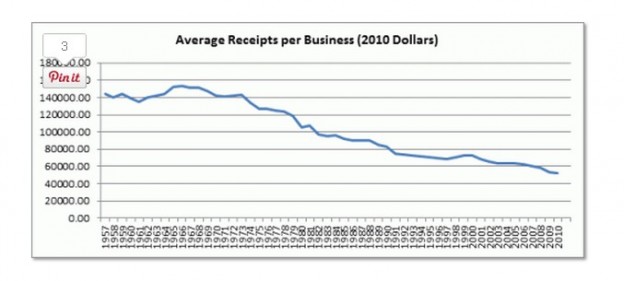 What we say is often less important than the words we use to express what we want to communicate. Saying the wrong thing is easy – we’ve all been there – but how do we say the right thing? Are there words with universal appeal that will help you grow your business? Yes! These are affectionately referred to as weasel words.
What we say is often less important than the words we use to express what we want to communicate. Saying the wrong thing is easy – we’ve all been there – but how do we say the right thing? Are there words with universal appeal that will help you grow your business? Yes! These are affectionately referred to as weasel words.
According to Psychology Today, “Words cannot change reality, but they can change how people perceive reality”. Every astute business owner knows that perception is everything and can make or break a sale. Weasel words are designed to give the appearance of truth without boasting or claiming something you might later cause a lawsuit. They are common in advertising and marketing, where the goal is to attract people (without asking them to think too deeply). A great example is, “leaves dishes virtually spotless.” They don’t promise it will leave your dishes spotless but you are left with the perception that they will be. So what are the words that will convince a customer to put down their hard-earned cash for our service or product?
The number one word of all = YOU
Yes, it really is all about you (meaning them – your customers). By personalizing your content with the word, you are creating a relationship with your customer. There is then a certain aura of trust a client gives when they believe that you have their individual interest at heart.
Get Excited
You’re introducing/announcing your breakthrough/surprising product and the client is welcome to take advantage of this unique opportunity. It’s recommended by experts and astounding! Not only that, but for a limited time your customer can get this special offer exclusively from your business.
Timing is Everything
Discover an amazing opportunity for a new product or service now. Ordering is fast and easy. It’s urgent your clients take advantage and act now before this opportunity passes by.
Reassure & Care
You can use these easy words, that are proven and guaranteed to give your clients the reassurance they need. It’s simple. Show them you care about their family, children and health. Studies show/indicate/reveal…
It’s All About Saving
Make sure your customers know they will save with the reduced prices, bonus and discounts you offer. You want to help them save their money and offer free samples and gifts for repeat customers. Up to 50%…more than 50%…
Now that you’re armed with a basic weasel word vocabulary, act now! As much as we may laugh and mock the ads we see everyday, they do have an influence on us whether we realize it or not. This is especially true as we are exposed to the material more than once. If everywhere you go you see and hear how important it is to have fresh breath it’s only natural to ask yourself if you do. Even if you don’t, chewing gum is recommended by dentists after meals for oral health and to help fight cavities. AND the new breath freshening flavor is sugar free, so why now grab that pack while you’re in line now?
By the way, if you have been wondering why they are called weasel words we won’t leave you guessing. Weasels have a rep for being sneaky, clever little creatures. That’s because they eat bird eggs by making a small hole and sucking out the contents, leaving the egg appearing intact. They also excel at getting in and out of a tight spot. All of that is all fine and well until they are spotted by a hawk. If you want your marketing campaigns to succeed, be a weasel.


 The franchise forecast for 2013 is ‘partly cloudy’. The US Census Bureau, in its first comprehensive statistical report on franchise businesses, issued in 2010, stated that franchises comprise a very respectable 10.5% of businesses surveyed and were responsible for a disproportionately high figure of close to one sixth of total sales. However, the 2013 franchise growth rate, predicted by IHS Global Insight, is expected to reach 1.4% (lower than 2012’s 1.5%).
The franchise forecast for 2013 is ‘partly cloudy’. The US Census Bureau, in its first comprehensive statistical report on franchise businesses, issued in 2010, stated that franchises comprise a very respectable 10.5% of businesses surveyed and were responsible for a disproportionately high figure of close to one sixth of total sales. However, the 2013 franchise growth rate, predicted by IHS Global Insight, is expected to reach 1.4% (lower than 2012’s 1.5%).

 In the trucking world, safety comes first, but continued concerns about lengthy workweeks and driver health are sending some truckers back to bed instead of onto the road. New regulations by the Obama administration, which will limit truckers’ workweek to 70 hours from 82, were announced in December 2011, but the industry had 18 months to implement the regulations.
In the trucking world, safety comes first, but continued concerns about lengthy workweeks and driver health are sending some truckers back to bed instead of onto the road. New regulations by the Obama administration, which will limit truckers’ workweek to 70 hours from 82, were announced in December 2011, but the industry had 18 months to implement the regulations.




 Due to the current recession, many companies find themselves cutting back in an attempt to reduce costs. One common measure used by many employers is reduction of office space. A 2011 Jones Lang Lasalle survey found that 73% of global companies are consolidating offices as an effective cost cutting measure. Workers in these companies are often forced to give up their offices and move into a shared workspace. It is essential for us to be aware of the challenges our employees are faced with when moving to a new environment.
Due to the current recession, many companies find themselves cutting back in an attempt to reduce costs. One common measure used by many employers is reduction of office space. A 2011 Jones Lang Lasalle survey found that 73% of global companies are consolidating offices as an effective cost cutting measure. Workers in these companies are often forced to give up their offices and move into a shared workspace. It is essential for us to be aware of the challenges our employees are faced with when moving to a new environment.

